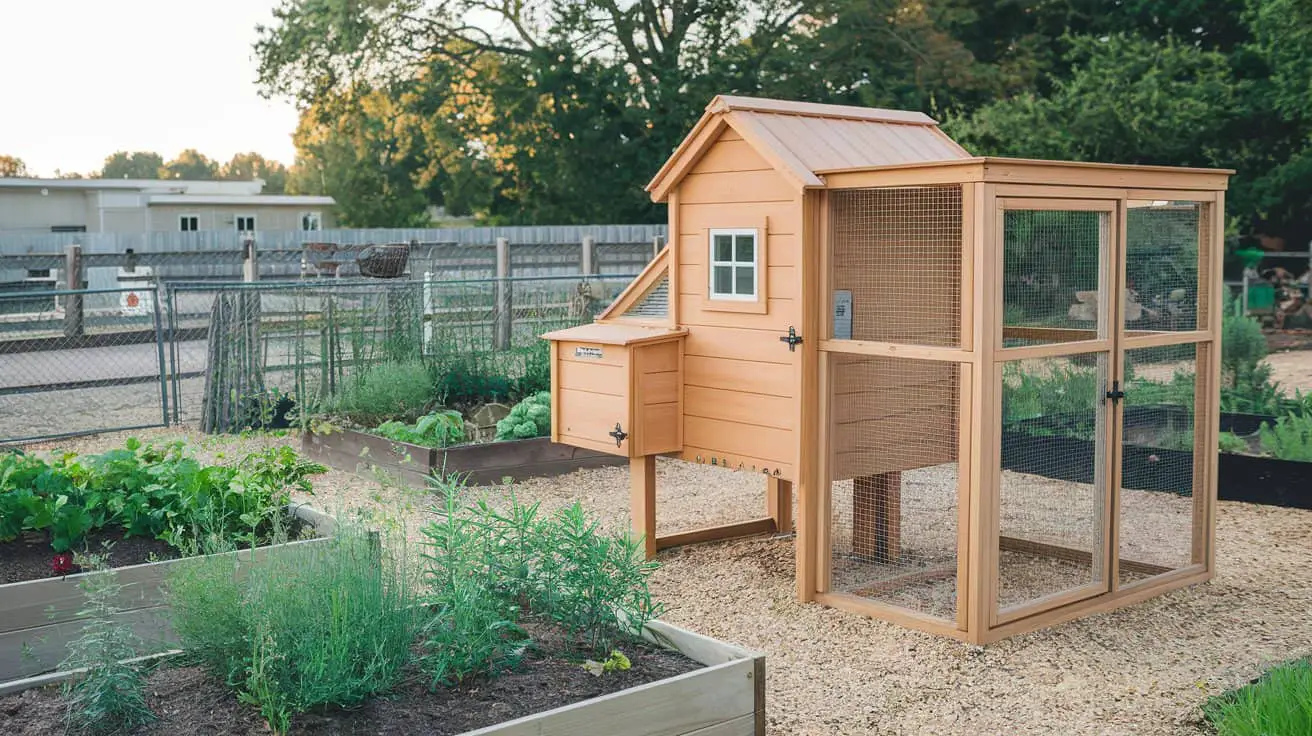
If you’ve ever tiptoed through a chicken coop trying not to knock over a feeder with your knee or accidentally bump your head on a roosting bar, then you know: walk-in chicken coops are a game-changer. Whether you’re raising a few hens in a cozy side yard or planning a full-on backyard poultry haven, having the space to move around comfortably makes a huge difference — for you and your chickens.
Walk-in coops don’t just give you more room. They let you build a smarter layout, keep things clean more easily, and offer your feathered friends more enrichment and protection. Below, I’ll walk you through some realistic and budget-friendly ideas for creating a walk-in chicken coop that’s not just functional — it’s family-yard fabulous.
1. The Garden-Coop Combo with a Gravel Base

Start with a solid gravel or paver base and build your coop directly into your existing garden layout. Think raised beds, herbs growing near the fence, and a walk-in wooden coop in the center or corner, with space to stand inside and collect eggs. The walk-in structure can be made from treated wood or even upcycled pallets, with chicken wire panels that let in airflow and sunshine.
This setup gives you natural pest control (chickens love bugs), plus it blends beautifully with your backyard without looking too “farmy.” Add a rain barrel nearby and you’ve got a cozy, self-sustaining micro-farm.
2. Inside-Outside Split with a Covered Run

If your yard allows, design a coop that’s half-shed, half-run. Use a basic garden shed frame for the indoor roosting area, and attach a walk-in covered runusing polycarbonate roofing panels or shade cloth to protect from rain and hawks.
Inside, use hanging PVC feeders, sturdy nesting boxes on one wall, and a ladder-style roost along the back. The outside space gives your hens fresh air, and the walk-in height makes daily care super easy.
3. Elevated Coop with Storage Underneath
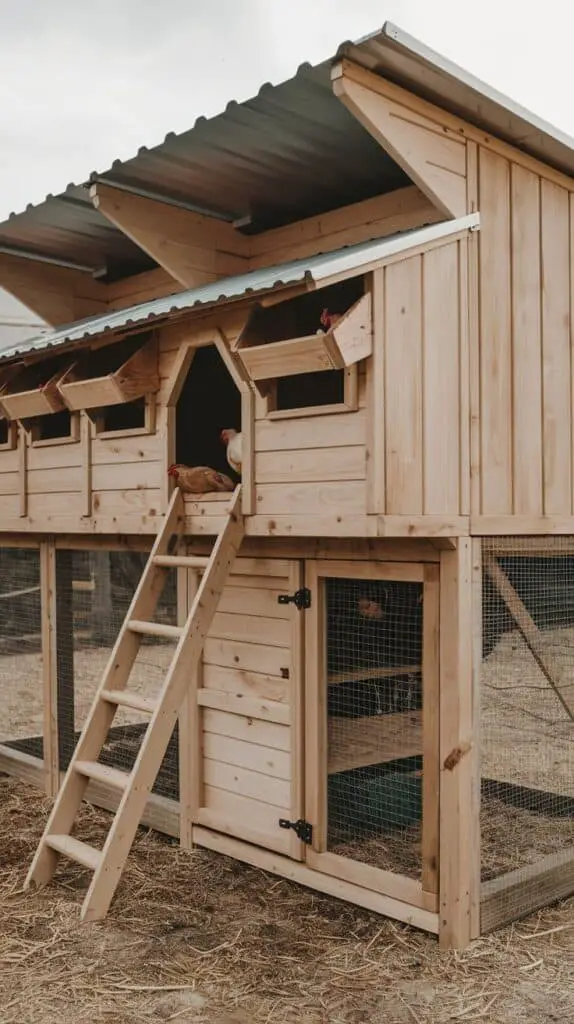
If you’re tight on square footage but want big function, elevate the coop. Build the henhouse off the ground and leave the space underneath open for feed bins, buckets, and supplies (just make sure it’s fully enclosed and predator-proof).
The elevated design also gives chickens a dry, shady hangout spot on rainy days. Inside, install a clean-out tray beneath the roosts for easy scooping. This layout works especially well if you’re tucking your coop along a side fence or behind a garage.
4. Greenhouse-Style Walk-In Chicken House
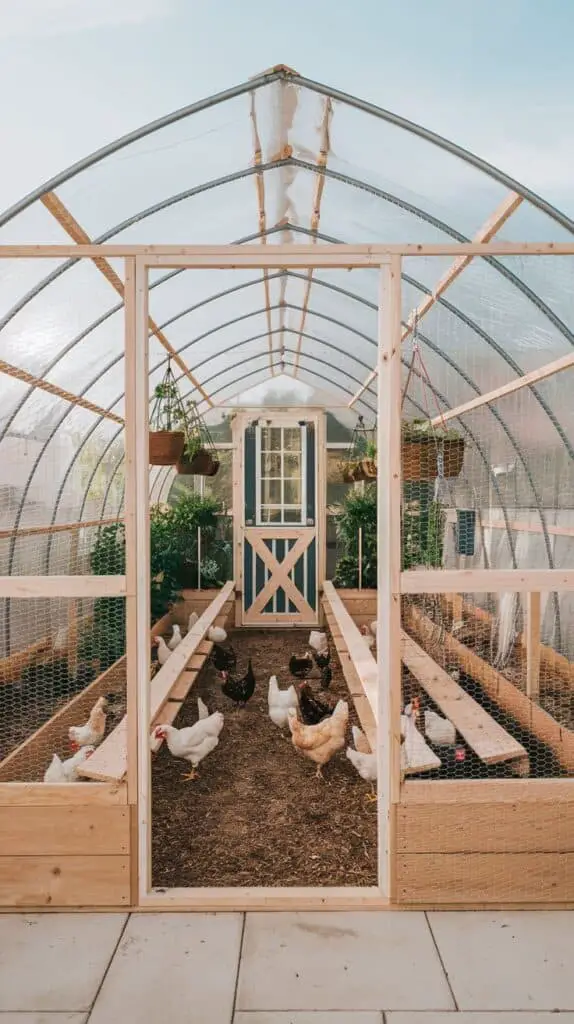
This one’s for the style-lovers. Use arched PVC or galvanized pipe hoops and clear greenhouse plastic sheeting to build a walk-in coop that lets in gorgeous light year-round. Add a wooden frame and hardware cloth for strength, and you’ve got a dreamy spot that feels like part chicken home, part secret garden.
Place a few potted herbs inside for enrichment and scent control, and design the interior with wooden roosts and sloped nesting boxes. Bonus: this design looks lovely next to raised beds or patio spaces.
5. Chicken Coop and Mudroom Mashup
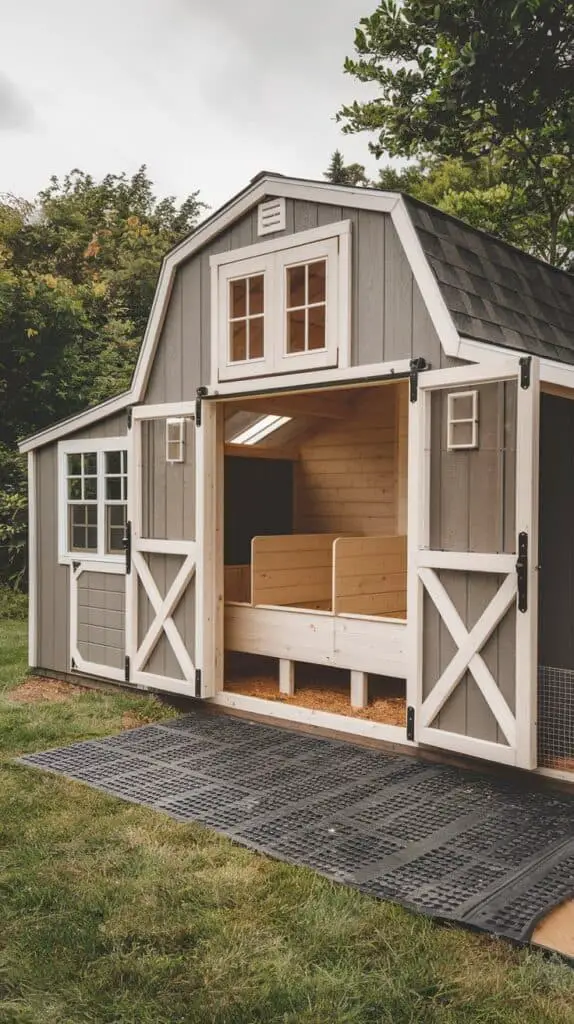
If you’re after a backyard setup that keeps your house clean too, create a coop that opens into a small outdoor mudroom-style structure. This could be an attached shed or breezeway, where you store your boots, feed, and egg baskets.
Design the coop side with walk-in access and a dividing wall for nighttime roosting. Add wide doors and rubber mat flooring so you can hose it down easily. It feels like part of your home, but still gives the chickens their own dedicated area.
6. Minimalist Walk-In with Concrete Block Walls

For a low-maintenance and predator-proof solution, use concrete blocks as the base walls and wood framing above. This layout is perfect for bigger coopsand humid climates where durability matters.
Install a simple metal roof and ventilation panels up top. Inside, keep things clean with wall-mounted feeders, removable nesting box inserts, and open floor space for scratching. You’ll love how sturdy it feels — and your hens will love the space.
7. Rustic Walk-In Shed Conversion
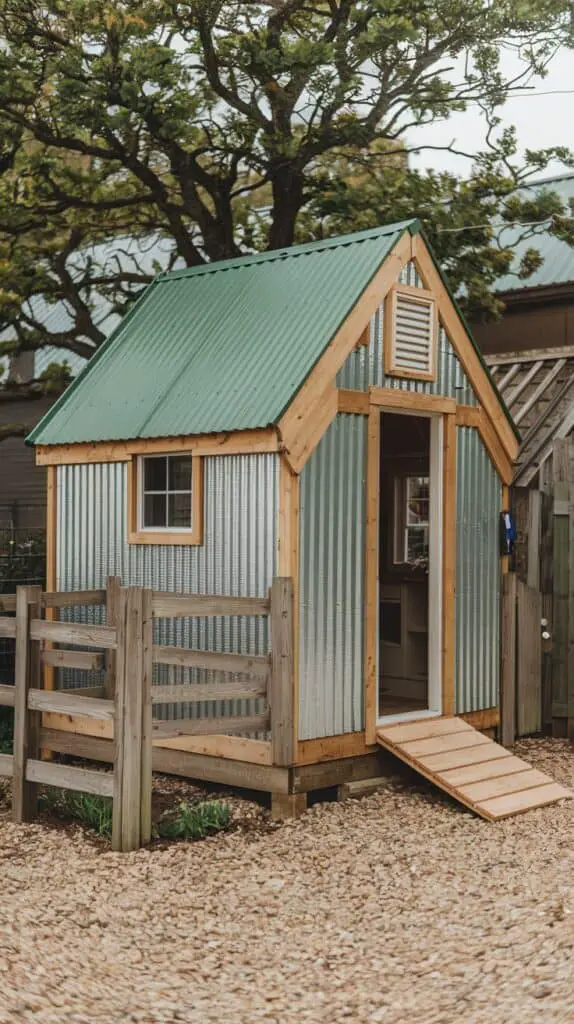
If you already have a shed that’s collecting dust and spiderwebs, convert it into a walk-in coop. Add vents or small windows, reinforce doors and flooring, and build your run off the side.
This is one of the easiest and most affordable ways to get a large, insulated chicken house without starting from scratch. Paint it barn red, add some hanging herbs, and let it double as a charming yard feature.
8. Walk-In Coop with Split Roosting Zones
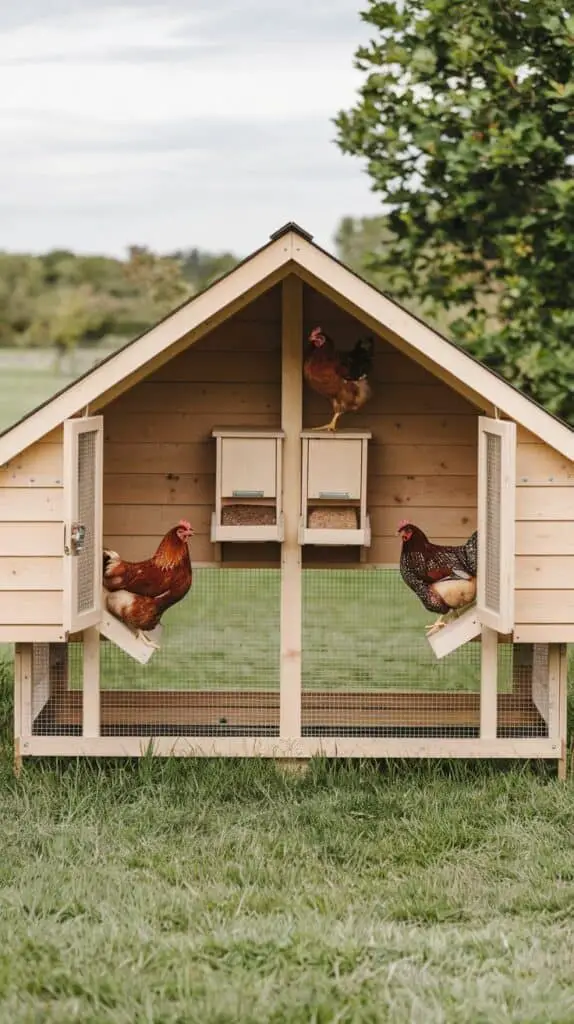
If you’re raising different breeds or want to separate younger pullets from older hens, design your coop with interior partitions. A single walk-in structure can have two or more roosting sections, each with its own access door and feed area.
This layout is also great for broody hens or recovering birds. Keep the overall space open for your convenience, but use wooden dividers, screen doors, or repurposed windows to split the interior while keeping things visible.
9. “Chicken Castle” with Lofted Storage

This one’s a little extra — but hear me out. Build a walk-in coop with two levels: roosts and nesting boxes below, and an upper loft space (inside or just above) for storing tools, straw, or even garden décor.
You’ll need a tall enough structure — think small barn, greenhouse frame, or high-roofed shed. Use reclaimed wood, metal grates for airflow, and a decorative arch doorway for fun. This layout adds height and utility without expanding your footprint.
10. Portable Walk-In Coop on Wheels
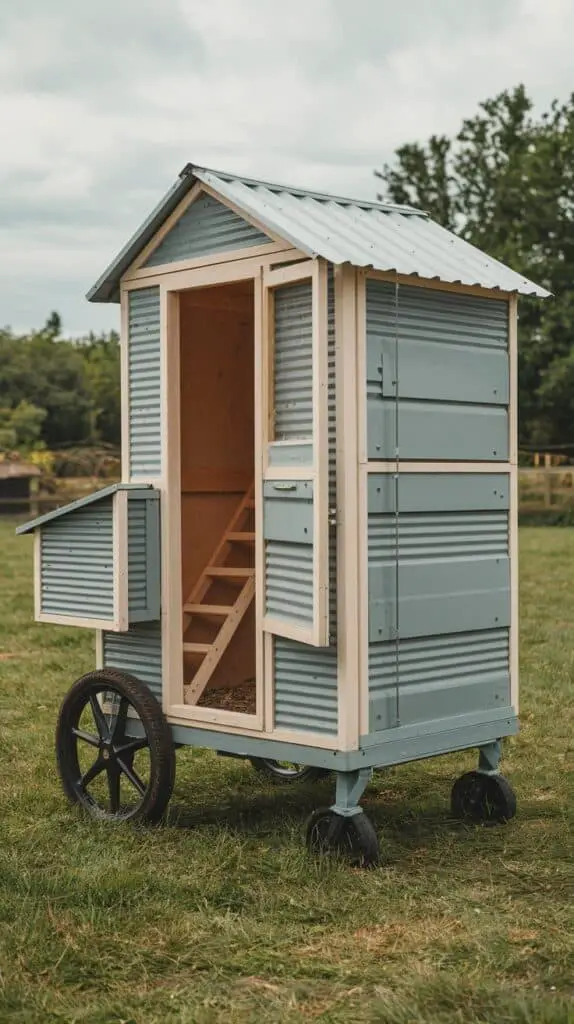
Want the benefits of a walk-in coop and the flexibility to move it? Build your structure on heavy-duty caster wheels or a trailer base. Use lightweight materials like corrugated plastic panels or thin wood siding.
This layout works well if your chickens free range part of the day, or you want to move the coop to fresh grass regularly. Keep it compact but tall, with a simple door and ladder roosts inside. Just be sure to anchor it during storms.
Final Thoughts
Walk-in coops are more than just a luxury — they’re a smart and family-friendly way to make backyard chicken care easier, cleaner, and more enjoyable. Whether you’re going rustic, minimalist, or greenhouse-chic, you can create a layout that fits your space, your hens, and your lifestyle.
Need help choosing a design? Start with what your yard already offers — a shed, a corner of the garden, or even a sunny fence line — and go from there. Your chickens (and your knees) will thank you.
